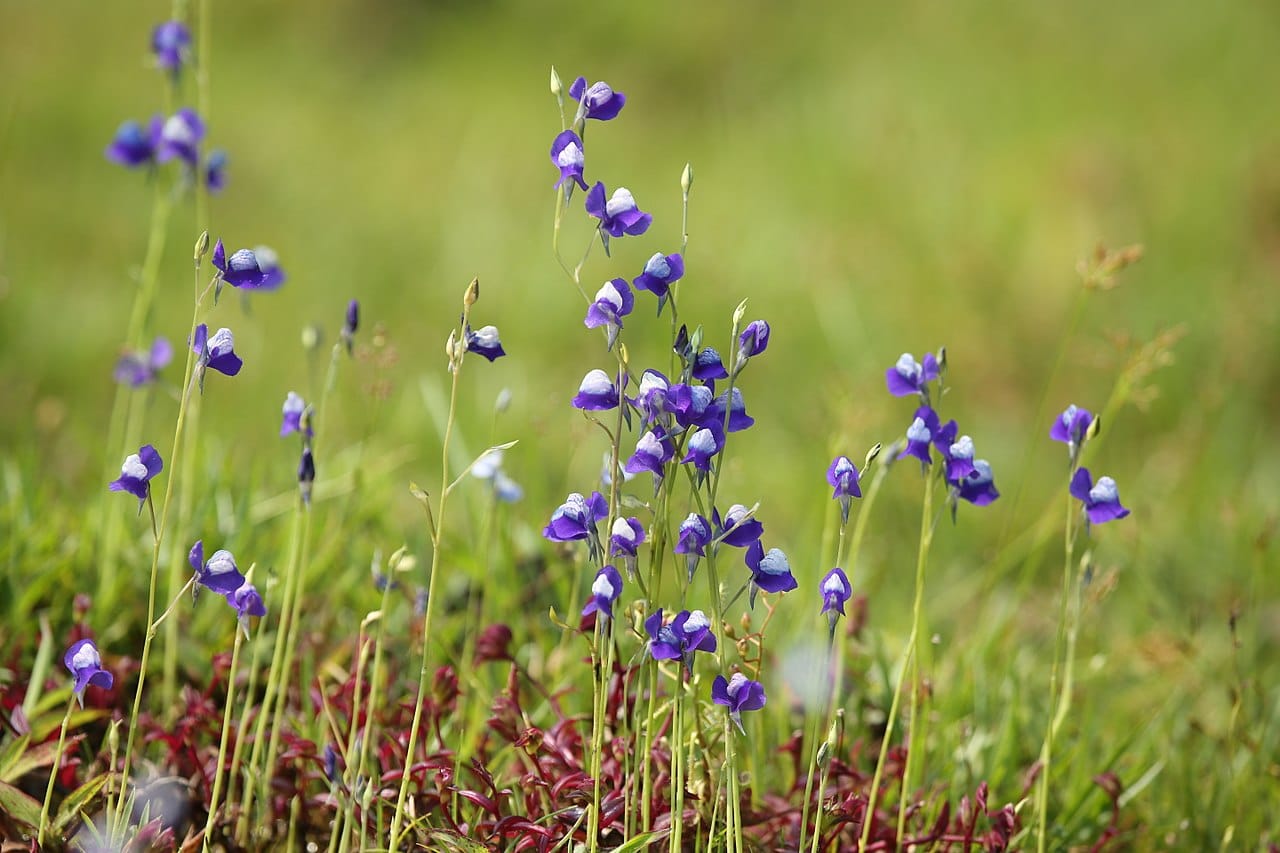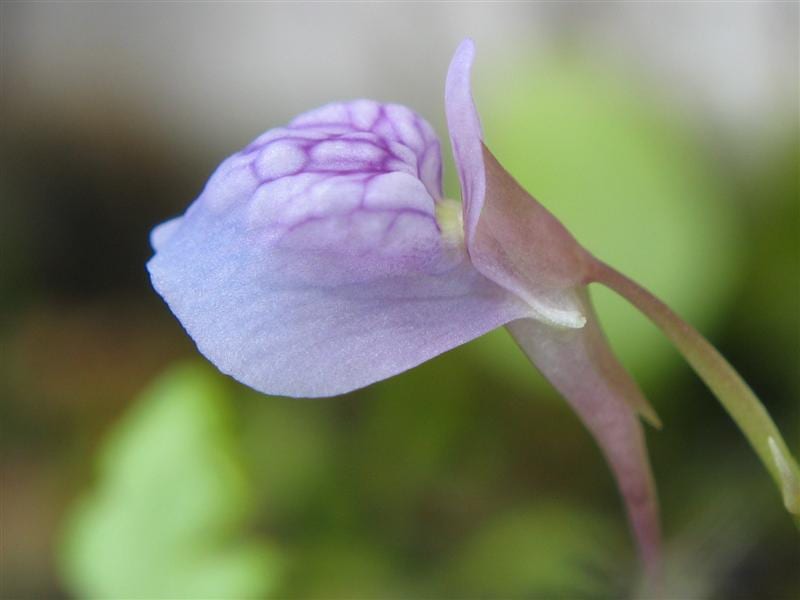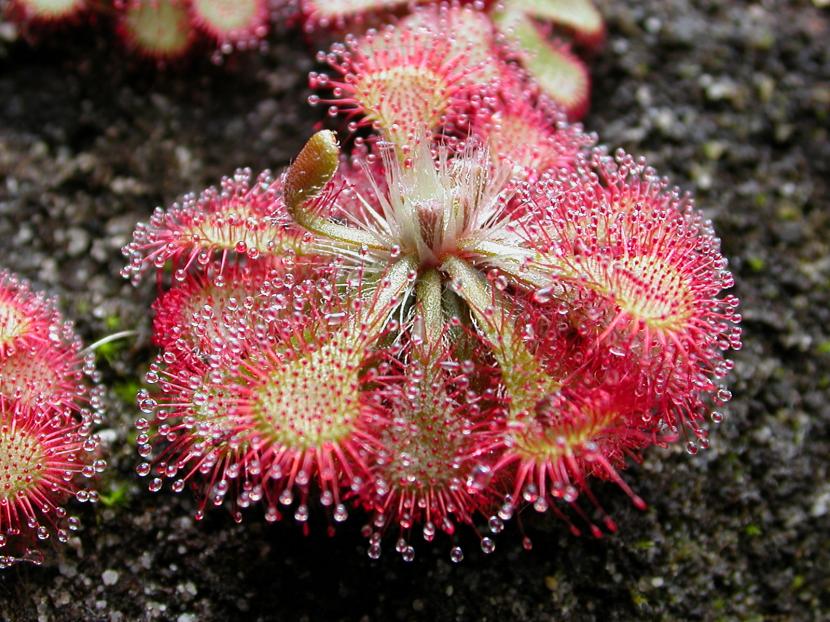
Image - Wikimedia / Judy Gallagher
All the Utricularia They are delicate-looking carnivorous plants that produce really pretty little flowers. Many of them develop underwater, in swamps, which is why they are very, very interesting to keep indoors in glass containers, for example.
Their care is therefore a little different from what other carnivores need. But this should not worry you, since they are relatively easy .
Origin and characteristics of Utricularia

Image - Wikimedia / Mini Anto
Utricularia are carnivores native to all over the world, except Antarctica. They usually thrive in moist soils, but also in places like freshwater rivers and swamps. They are characterized by having roots, leaves and stems that are not clearly differentiated.
Their traps are like very, very small bladders, between 0,2 and 5mm in diameter depending on the species., which open as soon as a tiny insect passes near them. The opening and suction mechanism is so fast and complex that it is considered to be one of the most sophisticated in the entire plant kingdom.
The flowers sprout at the end of fine stems, measure from a few millimeters to 6 centimeters, and have two petals of various colors. They produce seeds in large numbers, with a size of 0,2 to 1mm.
Main species
The most common are:
Utricularia graminifolia

Image - Flickr / satish nikam
It is a terrestrial or aquatic carnivore native to Asia, specifically to Burma, China, India, Sri Lanka and Thailand. Produces purple flowers with the center lighter.

Utricularia gibba

Image - Flickr / ashitaka
It is an aquatic carnivore, with a lively or annual cycle depending on the climate, native to the temperate and warm regions of the world. Produces yellow flowers.
Utricularia sandersonii

It is a terrestrial carnivore endemic to South Africa that produces small white flowers.
Utricularia vulgaris

Image - Wikimedia / Leonhard Lenz
Known as lentibularia, it is a floating or submerged aquatic carnivore native to Europe, except Portugal, Iceland and Turkey. Produces yellow flowers.
Utricularia bisquamata

Image - Wikimedia / Denis Barthel
It is an annual carnivore native to southern Africa that lives in moist soils. Produces bluish-purple flowers.
Utricularia longifolia

Image - Flickr / Alex Lomas
It is a terrestrial carnivore endemic to Brazil that produces purple flowers.
Utricularia inflata

Image - Flickr / Eleanor
It is an endemic aquatic carnivore of North America that produces yellow flowers.
Utricularia subulata

Image - Wikimedia / Bob Peterson
It is a carnivore with an annual, terrestrial cycle, native to practically the whole world, from tropical to temperate regions. Produces yellow flowers.
Utricularia calycifida

Image - Wikimedia / Petr Dlouhý
It is a carnivore with a terrestrial and perennial habit endemic to South America. Produces light pink flowers.
Utricularia purpurea

Image - Flickr / Doug McGrady
It is an aquatic carnivore endemic to North and Central America that produces purple flowers.
Utricularia humboldtii

Image - Flickr / John Pittman
It is an aquatic and perennial carnivore endemic to South America that produces purple flowers.
Utricularia reniformis

Image - Wikimedia / Salicyna
It is a perennial carnivore with a terrestrial habit endemic to Brazil that produces yellow flowers.
Alpine utricularia

Image - Wikimedia / Denis Barthel
It is a terrestrial carnivore native to the Antilles and northern South America that produces white flowers with a yellowish stain inside.
livid utricularia

Image - Wikimedia / Michael Wolf
It is a perennial and terrestrial carnivore native to central and southern Africa, as well as Mexico, which produces white flowers.
Utricularia cornuta

Image - Wikimedia / Orchi
It is a perennial carnivore endemic to North America that can grow as a terrestrial or semi-aquatic. Produces yellow flowers.
What are the care they require?
If you dare to have a Utricularia, we recommend you take care of it as follows:
Location
- Interior: it can be in a terrarium if it is terrestrial, or an aquarium if it is aquatic, with special light for plants (for sale here). If it is a terrestrial species, in a pot with drainage holes, in a room with good light.
- Body exterior:: in semi-shadow.
Substrates
They grow in acidic soils, so in cultivation are planted in peat moss or sphagnum moss mixed with equal parts perlite (on sale here).
Irrigation

Image - Wikimedia / Show_ryu
Very frequent. If it is aquatic, it will be enough to put it in an aquarium, and if it is terrestrial, it will be watered very often, preventing the substrate from drying out.
Use rain, distilled, or osmosis water.

Subscriber
You do not have to pay carnivorous plants. They alone will hunt their own prey.
Transplant
As most of them are quite small, they will not need to be transplanted more than once or twice in their lifetime, and only if they are terrestrial. Do it in spring, when the minimum temperature is above 15ºC, and be careful not to manipulate its roots too much.
Multiplication
By seeds in spring. Sow them in a mixture of blond peat with perlite in equal parts, ensuring that they are not buried (just a little, so that they are not exposed). Keep the substrate moist but not watery.
If all goes well, they will germinate in about two weeks.
Rusticity
It depends on the species, but I advise not to expose them to temperatures below 0 degrees. If they are tropical, to be able to grow them outdoors all year round, the thermometer should not drop below 18ºC.
Where to buy Utricularia?
They are plants that are found in stores and nurseries specialized in carnivorous plants, and sometimes in conventional nurseries. You can also buy seeds from here:
No products found.